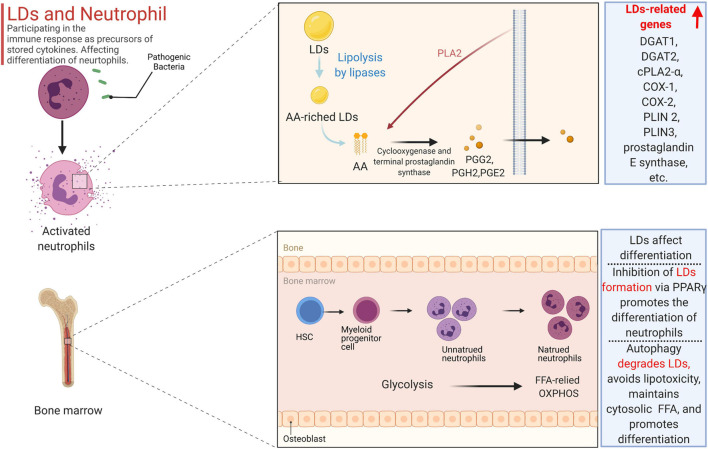FIGURE 2.
The formation of LDs is not only related to lipogenesis but also closely related to fat degradation, all of which not only affects neutrophil differentiation but also participates in the immune response as precursors of stored cytokines (primarily arachidonic acid) in the neutrophil. Free AA can be obtained by enzymatic decomposition of membrane phospholipids or can be released from AA-rich triglycerides stored in LD in some cells. Phospholipids can be cleaved by phosphorylated cytoplasmic PLA 2 to produce free fatty acids including AA, which in turn forms prostaglandins G2 (PGG 2), PGH 2, and PGE2, catalyzed by cyclooxygenase (COX-1 and COX-2) and terminal prostaglandin synthase. In the activation of neutrophils induced by Cr-LAAO, the microarray data also proved that the expression of lipid-related genes was up-regulated. Inhibition of galectin-12 in ATATA-induced human promyelocytic leukemia cell NB4 inhibits lipid droplet formation via PPARγ, and ultimately promotes the differentiation of neutrophils. Autophagy can degrade LD, not only preventing lipid accumulation and avoiding lipotoxicity, but also releasing free fatty acids to maintain the total amount of cytosolic fatty acids.

